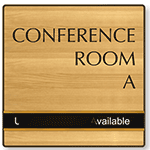Redesigning hospital rooms for improved patient experience, health
Hospital room design may impact more than just patient comfort. As the University Medical Center of Princeton discovered, it may also affect patients’ health. The hospital reimagined its patient rooms, as part of a new hospital, and found that the redesign led to a particularly startling side affect: patients requested 30 percent less pain medication, reports the New York Times.
http://www.nytimes.com/2014/08/22/arts/design/in-redesigned-room-hospital-patients-may-feel-better-already.html?module=Search&mabReward=relbias%3Aw&_r=0
Prior to the new project, the hospital, located in Plainsboro, New Jersey, surveyed staff members and patients and built model rooms. The hospital moved patients to the model rooms from the surgical unit to contrast the impact of old and new hospital rooms. They found that patients in the model room ranked nursing care and food higher than those patients staying in the older rooms, though both the food and the nursing care quality were the same.

Redesigning hospital rooms may improve patient health. From digital cat.
Still, that 30 percent decrease in pain med requests is likely the most interesting result of the model room project. As the Times explains, “Reduced pain has a cascade effect, hastening recovery and rehabilitation, leading to shorter stays and diminishing not just costs but also the chances for accidents and infections. When the new $523 million, 636,000-square-foot hospital, on a leafy campus, opened here in 2012, the model room became real.” Today, the new hospital’s patient satisfaction rate is ranked in the 99th percentile, a jump from 61 percent prior to the move, and both accident rates and infections are the lowest they’ve ever been.
Designers made hundreds of choices when plotting out the new patient room, among them:
1) There are only single rooms, no doubles, as research reveals that patients with shared rooms offer doctors “less critical information” than those in singles.
2) There is extra space for guests, as family and friend visits have been shown to speed up recovery.
3) Natural light is available, as it has also shown a positive impact on recovery. Additional features include a bathroom located close to the bed to prevent falls, as well as an extra sink for doctors and nurses to use to wash their hands.
There are obvious benefits of starting design from the ground up. As the Times explains, many existing hospitals face unique challenges: “adjacent rooms are ‘mirrored’ because they share a head wall, the one behind the bed with all the equipment and attachments in it. Mirror rooms are cheaper and take up less space, but they require that everything — the position of the bed, the IV tubes, the call buttons — be reversed, right to left or left to right, from room to room, increasing the chance that nurses and doctors will make mistakes when they reach for buttons or equipment.” This can lead to major errors, with further implications the expense of the patient’s health.
Some of the new hospital’s features, such as antibacterial flooring, which cost the hospital $700,000, haven’t necessarily delivered clear results. Yet design may remain more art than science. As Christopher Korsh, the principal architect on the Princeton hospital project, explained to the Times, “We employ researchers to study outcomes of what we do. But it’s still not like doing drug development. Pharmaceutical companies can have control groups and placebos, but because every hospital facility is different, and because there are so many other variables, it’s hard to isolate some particular design metric and say it’s responsible for a certain health outcome.
Category: New Products















